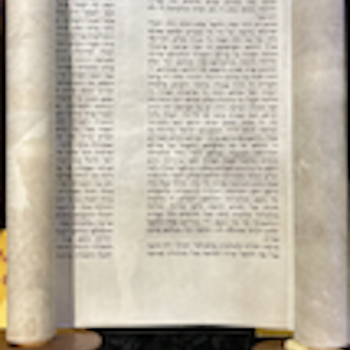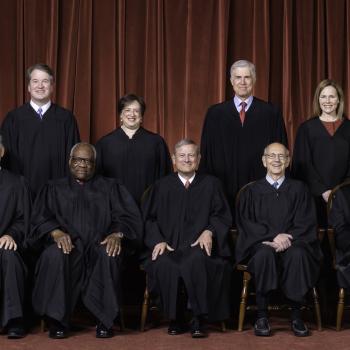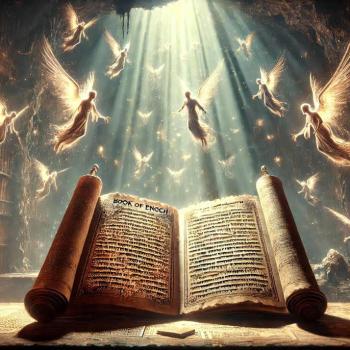Most Christians believe that the human soul is immortal and that when they die their soul goes to heaven to enjoy conscious bliss. The foremost Bible texts they cite for support are 2 Cor 5.1-8 and Phil 2.21-23; others are 1 Th 3.13; 1 Pt 3.18; Rev 6.9-10. Like most Christians, this is what I was taught, and I believed it for nearly thirty years.
But this is not what the Bible teaches or the early Christians believed. Paul says only God possesses immortality (1 Th 1.17; 6.16). Famed William Tyndale and many others have well-argued that if the soul is immortal, resurrection is unnecessary. The premier hope of many Christians is going to heaven when they die, not resurrection.
When Paul writes about “longing to be clothed with our heavenly dwelling” (2 Cor 5.2), he refers to our future resurrection. So, that must be what he means when he says “at home with the Lord” (v. 8), not that our soul will go to heaven when we die, since our resurrection will occur when Jesus returns. And when Paul says “dying is gain,” and “my desire is to depart and be with Christ, for that is far better” (Phil 1.21, 23), he means after death he won’t be conscious until his resurrection occurs at Jesus’ return.
Related to this, Judaism and Christianity have long had an anthropological disagreement as to whether man is trichotomous (body, soul, and spirit) or dichotomous (body and soul-spirit). The difference is whether the soul and spirit are distinguishable (trichotomous) or the same (dichotomous). Deciding which view is correct affects how one understands the intermediate state—the time period between human death and the resurrection. There are many biblical texts which seem to interchange the soul and spirit, as if they are a single entity. On the other hand, biblical texts which seem to require distinguishing the human soul and spirit include the following: Job 33.4; Ps 31.5; 104.29; 146.4; Eccl 12.7; 1 Th 5.23; Mt 10.28; 12.40; Lk 23.43, 46; Ac 7.59; Heb 4.12; Jam 2.26. Some of these texts indicate that only the spirit imparts life to the body, its departure signifies death, and then it returns to God.
The word in the Hebrew Bible often translated “soul” is nephesh. It’s counterpart in the Greek NT is psyche. The Bible’s nephesh appears to refer to the whole person, i.e., the essence. Scholars claim nephesh has a wide range of meanings and applications. (See E. Jacob (TDNT, 9:618) The kjv renders chayiah nephesh in Gen 2.7 as “living soul,” but most modern English versions have “living being” (e.g., JB, NIV, NASB, NRSV, JPS, and the ESV has “living creature”). Translators have done this since they and most scholars think nephesh is here intended to refer to the whole person and body rather than only the soul.
What is the history of this disagreement about soul and spirit? Prior to the Christian era, Jews believed that the human soul is not immortal and that when a human being dies, in some form his or her soul still exists and goes down to Sheol to “sleep” or “rest,” awaiting resurrection and judgment. They believed that’s what their Bible teaches. But Diaspora Jews began to change this belief in Judaism by accepting the classical Hellenistic teaching that the soul is immortal and that at death righteous souls go to heaven to enjoy conscious bliss.
The Classical Greek view of death was that human souls thereafter resided in Hades. Platonic Greek philosophy later taught a dualism: (1) physical matter is evil or the source of evil, (2) the human soul is good and immortal, (3) the soul is imprisoned in its (evil) body, (4) death frees the purest of souls to enjoy full knowledge in an eternal afterlife, and (65 most human souls must endure multiple “incarnations” (reincarnation) to be perfected and thus attain eternal disembodiment. These Greeks, looking forward to death, were divided on whether the immortal soul went to “heaven.” Socrates actually taught the immortality of the soul as he drank the poison hemlock, which was the court-imposed sentence he chose over exile.
How opposite that was of Jesus, who prayed concerning his imminent death, “My Father, if it is possible, let this cup pass from me; yet not what I want but what you want” (Mt 26.39).
Patristic writers of the second and third centuries strenuously opposed belief in the immortality of the soul. (See the classic book on this subject by Jewish, NT scholar Alan Segal entitled Life After Death: A History of the Afterlife in Western Religion (2004). Their opposition was further strengthened because Greeks taught against belief in resurrection (cf. Ac 17.18, 31-32), which the Bible strongly affirms. These church fathers believed the Bible says man is trichotomous. (See a brief chapter in a book online about the history of Christian belief on this subject at http://www.gracenotebook.com/pub/2,id,89,sv,1.)
Fourth century bishop Appolinaris began to change this. The large majority of Christian scholars ever since have believed that man is dichotomous and man’s soul is immortal. Most Protestant leaders adhered to dichotomy, but Martin Luther advocated trichotomy and soul sleep. Those who embrace trichotomy often believe in soul sleep. Those who adhere to dichotomy usually reject soul sleep, claim the soul is immortal, and don’t regard Sheol/Hades as a literal place inside the earth where souls reside. Following the 19th century, there has been a resurgence of trichotomy belief among Christians.
For Christians, the foremost biblical text about the intermediate state is what Jesus said to the penitent criminal crucified with him, “Today you will be with me in Paradise” (Lk 23.32). (Jews generally believed Sheol was divided, and some called the place of righteous souls “Paradise.”) Jesus had also said of his death and resurrection, “For just as Jonah was three days and three nights in the belly of the sea monster, so for three days and three nights the Son of Man will be in the heart of the earth” (Matt. 12.40). And Jesus had taught, “Do not fear those who kill the body but cannot kill the soul; rather fear him who can destroy both soul and body in hell” (Matt. 10.28). These texts indicate that at Jesus’ death his soul still existed somehow, and that it went to Sheol deep inside the earth. Paul adds that the risen Jesus “descended into the lower parts of the earth” (Eph 4.9), perhaps to preach to spirits (1 Pt 3.19).
The OT mentions Sheol 67 times. It often says that when righteous and unrighteous humans die their souls go to Sheol. Sheol corresponds to Hades in the Greek NT. Classical Greeks generally believed in what many ancient peoples called “the underworld.” These Greeks located Hades in the underworld. They believed the souls of deceased humans resided there. Many OT passages relate that human souls residing in Sheol do not experience consciousness, being “asleep.” But most English Bibles translate Sheol as “grave,” “pit,” etc., which causes confusion. Yet they often transliterate Hades in the NT. Thus, most Christians know about Hades, but not Sheol. Here is what the OT says of human souls in Sheol:
- There is no mention of God or his wonders in Sheol, and no memory of him there (Ps 6.5a; 88.12).
- “The dead do not know anything” (Eccl 9.5), for Sheol is “the land of forgetfulness” (Ps 88.12).
- Sheol is “the land of silence” (Ps 94.17) and “the land of darkness” and “utter gloom” (Job 10.21-22).
- There is no giving of thanks to God in Sheol (Ps 6.5b; Isa 38.18a).
- “The dead do not praise the lord” (Ps 115.17a; cf. Ps 88.10; Isa 38.18b).
- “There is no activity, planning or wisdom in Sheol where you are going” at death (Eccl 9.10).
- Job says if he dies, “I would have slept then, I would have been at rest” (Job 3.13).
- Job also says, “If I look for Sheol as my home, I make my bed in the darkness” (Job 17.13).
- Isaiah says at death a “righteous man…enters into peace.” They “rest on their couches” (Isa 57.2).
- David says of God’s Spirit, “if I make my bed in Sheol, you are there” (Ps 139.8).
- Angel to Daniel, “go your way, and rest; you shall rise for your reward” at resurrection (Dan 12.13).
- The OT says 13 times that at death human souls go “down to Sheol.”
- Jesus located Sheol when he said he would die and then be in “the heart of the earth” (Mt 12.40).
- Sheol is “below” and “beneath” the earth’s surface, thus not the grave (Prov 15.24; Isa 14.9).
- Sheol is “the pit of nothingness” (Isa 38.17). Scripture often describes Sheol as a “pit” or “abyss.”
- A certain king of Babylon is “brought down to Sheol, to the depths of the Pit” (Isa 14.15).
- “They had as king over them the angel of the Abyss,… Abaddon” (Rev 9.11 NIV; cf. Prov 27.20).
- So, there are “the depths of Sheol” (Ps 86.13; Prov 9.18; cf. Jonah 2.2; Isa 7.11).
- There is “the mouth of Sheol” (Ps 141.7) and “the gates of Sheol” (Isa 38.10).
- Fire “burns to the lowest part of Sheol” (Deut 32.22).
- The OT never says human souls suffer torment in Sheol. But see Jesus’ parable in Luke 16.19-31.
In sum, the Bible seems to teach that humans are trichotomous since “the word of God … divides soul from spirit” (Heb 4.12), at death the spirit goes up to God (Eccl 12.7), and the soul is not immortal since at death it goes down to Sheol, not the grave, to sleep during the intermediate state.
(OT=Old Testament; NT=New Testament; scripture quotations are from the NRSV unless otherwise noted)












